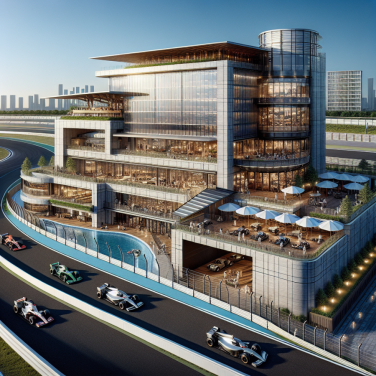Unveiling the Aerodynamic Mastery in Formula 1 Racing
As we delve into the intricacies of Formula 1 engineering, it is impossible not to be in awe of the aerodynamic mastery that these speed machines display. Aerodynamics is at the heart of Formula 1 racing, with teams investing heavily in wind tunnel testing, computational fluid dynamics, and innovative design to gain a competitive edge over their rivals.
The primary objective of aerodynamics in Formula 1 is to maximize downforce while minimizing drag. Downforce is the vertical force exerted downwards onto the car by the air passing over and under the vehicle. This force presses the car against the track, enhancing tire grip and allowing for greater speeds in corners without losing control. Conversely, drag is the resistance a car experiences from air particles as it hurtles down the track. Minimizing this drag is crucial for achieving peak speeds on straights and improving fuel efficiency.
The front wing is the first part of the car to meet the oncoming air, making it a critical element in directing airflow efficiently. It must be designed carefully to manage the airflow that leads to the rest of the vehicle. Endplates, flaps, and intricate wing elements work in conjunction to channel the air to the sides of the car, reduce turbulence, and optimize the car's wake for the benefit of downforce.
Moving back from the front wing, the bargeboards and sidepods perform a ballet of directing airflows around the sides of the car, cooling critical components such as the power unit, and managing the vortices that contribute towards generating downforce. The complex designs seen in these areas highlight the stunning attention to detail that goes into engineering a Formula 1 car, often leveraging the ground effect to suck the car onto the tarmac.
The floor of the F1 car is an unsung hero of aerodynamics. Recent rule changes have reintroduced the significance of ground effect aero, allowing cars to generate a substantial amount of downforce from the floor by utilizing the Venturi tunnels that accelerate the air passing under the car, creating an area of low pressure. This is coupled with careful management of the airflow at the rear with the diffuser, which is paramount in expanding and slowing down the air, further boosting the car's adherence to the ground.
At the car's rear, the rear wing completes the aerodynamic package. Its main function is to create downforce at the back of the car, balancing the grip between the front and the rear.
Read also:
Speedway 101: A Beginner's Guide to the Racing World
Exploring the Powerhouses: A Dive into Formula 1 Engine Technology
Formula 1 is renowned for pushing the boundaries of automotive engineering, and nowhere is this more evident than in the heart of these speed machines: their engines. F1 engines are marvels of power, efficiency, and lightweight design, developed through intense competition and an unrelenting quest for performance.
Focusing on the current era, Formula 1 engines are 1.6-liter V6 turbo hybrids, a specification that has been in place since 2014. These power units are a symphony of modern engineering, designed to extract maximum power from the limited fuel flow allowed in the sport. With around 1000 horsepower on tap, F1 engines are incredibly efficient, converting over 50% of fuel energy into power – a figure that stands in stark contrast to the 30-35% efficiency of the best road car equivalents.
The internal combustion engine (ICE) is the main power source and operates in harmony with complex hybrid systems. The turbocharger plays a crucial role, not only in boosting power but also in energy recovery. The MGU-H (Motor Generator Unit - Heat) harnesses energy from exhaust gases, as they spin the turbine, and converts it into electrical energy that can be stored or used instantly.
Working in tandem with the MGU-H is the MGU-K (Motor Generator Unit - Kinetic), which recovers kinetic energy during braking. This energy, otherwise lost as heat, is stored in a sophisticated energy store (battery pack) and can be deployed for additional power or to conserve fuel, a critical element given the tightly regulated fuel usage in races.
These components are managed by cutting-edge control electronics and software that ensure optimization of performance. Teams continually develop proprietary algorithms and calibrations to manage the split between harvested and deployed energy, the turbocharger's operation, and the intricate balance between power, reliability, and fuel economy.
One of the newest challenges for F1 engineers comes in the form of heat management. The densely packaged power units generate immense heat, which must be dissipated without compromising the car's aerodynamics. Advanced materials and innovative cooling solutions, such as tight intercooling and sophisticated water-cooling systems, are pivotal to maintain engine performance and reliability throughout a race.
Material science also plays a necessary role, with components made from exotic alloys and composites that can withstand high temperatures and stresses. The crankshaft, pistons, and connecting rods are all subject to extreme forces and are constructed from materials chosen for their strength-to-weight ratios and longevity.




